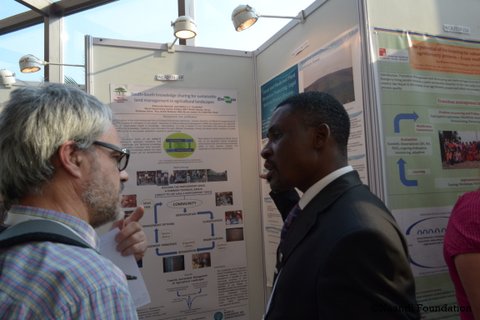The good folks at ICRAF invited Naandi Foundation to the World Agroforestry Congress held in Delhi between the 10th to 15th February 2014. The event opened on a chilly Monday morning with an inaugural address introduction from the Indian president Pranab Mukherjee. The President then felicitated adults and kids from across India with awards for their work on biodiversity. The engaging luncheon presented us with a buffet of ideas and cuisine. People from across the world introduced their work as everybody broke “naan” together. With everyone having introduced themselves the gathering split up into six workshops.
The second day saw the president of the Livelihoods Venture, Bernard Giraud, gave an introductory address in the morning and speak about improving nutrition through Agroforestry. He spoke about the livelihoods network camp hosted by Naandi in October 2011 at Araku. He also spoke of the Hariyali (Greenery) Project through which Danone and Mahindra ambitiously hopes to plant 6 million fruit and coffee saplings by 2016. We met with him briefly to discuss the best way forward for the Pollinator Programme. It was a pleasure to meet back some old friend like Behinda from Indonesia who was also present in Araku livelihoods network last year.
The event was divided into six workshops – all of them dealing with key livelihoods and social enterprise. Our workshop focused more on biodiversity. Time became a constraint as everybody was keen to share their work, there was nothing in it as everybody’s presentations and areas of work were fascinating. 

We really appreciate the platform the Congress provided to learn about projects across the world. While our tireless pursuit for sustainability carries on, it feel truly special to mingle with like-minded people and get recognition for our efforts. We look forward to participating in events of this nature (pun intended).
The goal of the conference was to show that the best way to develop in a sustainable way an area by linking research, practical aspect and government goal and how to link the farmers directly to the consumers without passing by the middle man. By doing this, it allow us to get better quality product as well as a better value for money for the consumers.
To conclude, the World Agroforesty Congress was a great opportunity to understand the different needs in the rural livelihoods space. We thank the organizers of the conference and ICRAF for their support.



























